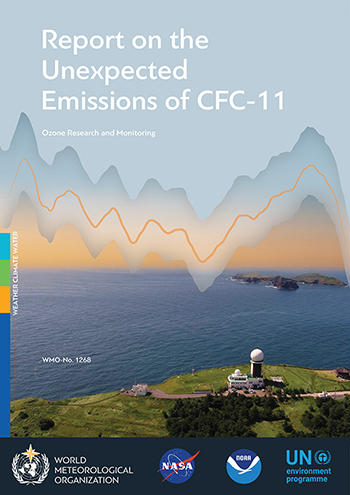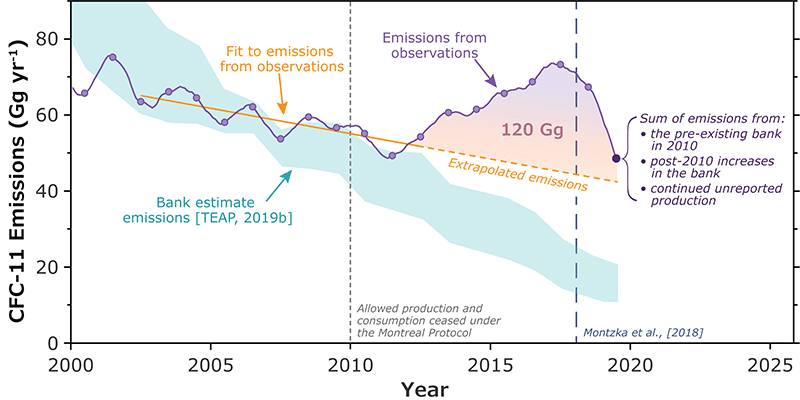A .gov website belongs to an official government organization in the United States.
A lock () or https:// means you've safely connected to the .gov website. Share sensitive information only on official, secure websites.
20 July 2021

The World Meteorological Organization (WMO) released its final Report on the Unexpected Emissions of CFC-11 . The Report was written by the Scientific Assessment Panel (SAP) to the Montreal Protocol on Substances that Deplete the Ozone Layer. CFC-11 was reportedly fully controlled under the Montreal Protocol since 2010. However, a 2018 scientific paper [Montzka et al., 2018] published in Nature revealed that instead of decreasing, CFC-11 emissions were increasing. This Report addresses: current and past observations of CFC-11 atmospheric abundances, information on the CFC-11 global and regional emission increase and subsequent decrease, changes derived for emissions of CFC-12 and carbon tetrachloride (CCl4), estimates of CFC-11 banks (CFC-11 that has been produced but has not yet been emitted), scenarios of future emissions and atmospheric concentrations, and the impact on the stratospheric ozone layer of the anomalous enhancement in CFC-11 emissions.
NOAA GML scientist Stephen Montzka was a co-author of the SAP report and acted as a consulting expert in helping the Technology and Economic Assessment Panel (TEAP) of industry experts and consultants finalize their report on the unexpected CFC-11 emissions. CSL Director David Fahey served on the advisory group for the SAP report. Other NOAA and cooperative institute employees (CIRES) including Geoff Dutton, Brad Hall, Lei Hu, J. David Nance, Isaac Vimont from GML, and Eric Ray from CSL, all contributed to the science content of the SAP report. Sarah Doherty from CSL was the report coordinator, and Chelsea Thompson from CSL provided graphic support for the report figures and designed the report cover.
